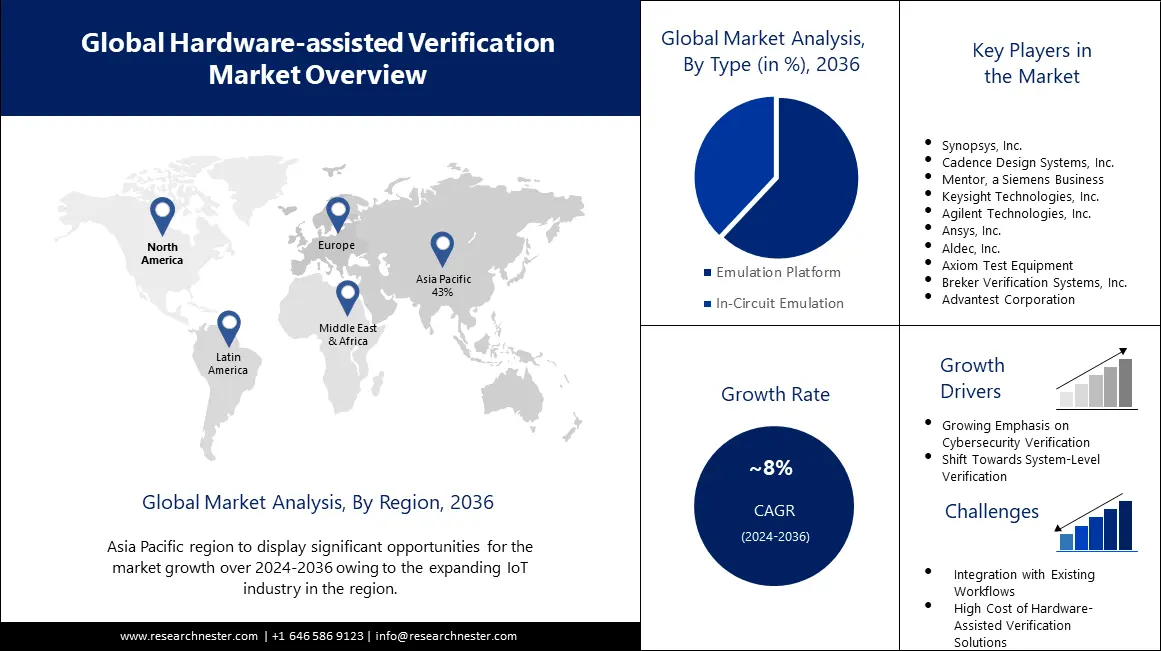
Hardware-assisted Verification Market size was valued at USD 655.06 million in 2024 and is expected to reach USD 3.94 billion by 2037, registering around 14.8% CAGR during the forecast period i.e., between 2025-2037. In the year 2025, the industry size of hardware-assisted verification is evaluated at USD 732.62 million. The rising complexity of semiconductor designs stands as the main driver propelling the growth of the market. As technological advancements accelerate, semiconductor components power diverse applications, ranging from artificial intelligence and 5G to automotive electronics. Consequently, the intricate nature of these designs demands a robust verification process to ensure functionality, reliability, and optimal performance. The semiconductor industry is witnessing a paradigm shift towards increasingly intricate designs, driven by the insatiable demand for enhanced functionalities and performance across various sectors. According to a recent report, the global hardware-assisted verification industry is projected to grow by 9.5% by the year 2027.
Hardware-assisted verification involves the use of specialized hardware, such as emulation and FPGA-based prototyping, to accelerate the verification of complex integrated circuits (ICs) and systems-on-chip (SoCs). This approach is particularly crucial in the semiconductor industry to ensure the functionality, performance, and reliability of intricate designs. There's a trend in the industry toward "shift-left" testing methodologies, where verification tasks are moved earlier in the design cycle to catch and address issues sooner. Hardware-assisted verification contributes to this trend by enabling early testing of hardware and software components.

Author Credits: Abhishek Verma
Copyright © 2024 Research Nester. All Rights Reserved

FREE Sample Copy includes market overview, growth trends, statistical charts & tables, forecast estimates, and much more.
Have questions before ordering this report?